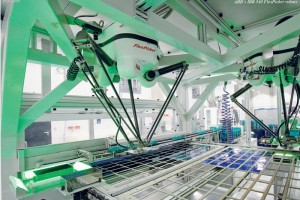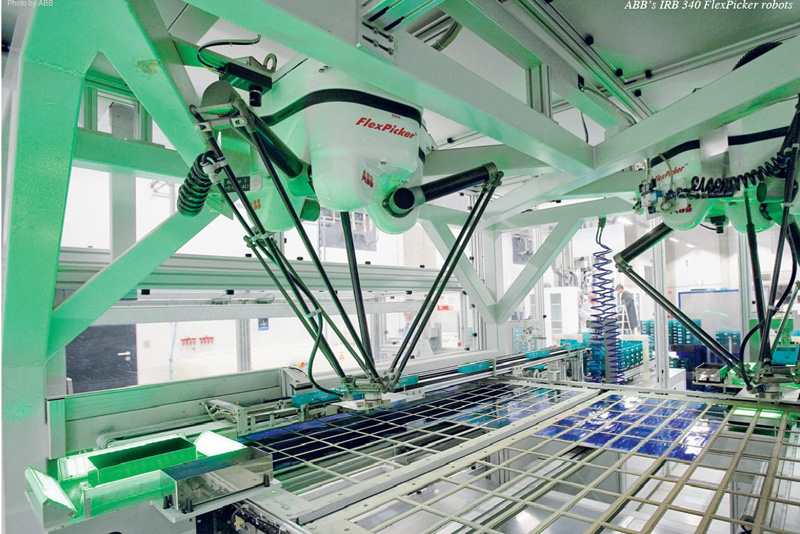There are over 7 billion humans on this planet in the year 2012. There will be more than 9 billion of us by mid-century. Finding jobs for the existing 7 billion is tough enough. Add the extra 2 billion plus and we have a monumental task ahead of us in creating gainful employment.
To add to this growing human presence we have another dilemma. Our population is aging with more humans living longer lives. What was rare in1950 by 2050 will be common – millions of centenarians, and many in our 70s, 80s and 90s still capable of gainful employment. So we will have a new generation of people under 50 and an almost equal number over 50.
Now throw a real spanner into the works. Artificial intelligence and robotics. Whether our home is the Western or Eastern Hemisphere, the world of work, in particular, the world of manufacturing, is undergoing a revolution because of intelligent machines with articulated arms and the ability to work 24 x 7, day or night, with or without the lighting and heating humans require, and with a precision no human can match. And it is not just in manufacturing where intelligent, articulated machines are impacting the workforce. Warehousing and distribution is also witnessing a transformation from humans to machines. And coming soon to that white collar job near you, the artificial intelligence revolution. It’s already creating waves in the stock market with recent headlines showing just how disruptive a technology computer-based trading can be.
In an article that appeared in the New York Times on August 18, John Markoff tells the story of a number of companies that today are deploying robots instead of people to do repetitive work under minimal supervision. Here are some of his examples:
- Tesla’s factory in Fremont, California uses individual robots to do multiple tasks including welding, riveting, bonding and component installation
- Philips Electronics in the Netherlands assembles electric shavers in a factory with 128 robotic arms
- Foxconn, the Taiwanese manufacturer of the iPhone for Apple, is planning to replace its human assembly lines employing 1.2 million workers with robots
- Flextronics, in Milpitas, California, is using robots to do precision work assembling solar cells while humans do simpler tasks
- C & S Wholesale Grocers, the largest grocery distributor in the United States, is using robots to retrieve and pack goods to ship to stores at rates of efficiency that no human labour can match
- Boeing, is using robots to do the riveting on its 787 Dreamliner aircraft
- Earthbound Farms, a California organic lettuce producer, is using robots to pick and pack its produce for customers
To the examples Markoff provides add these recent announcements:
- Amazon in March 2012 announced its acquisition of Kiva Systems Inc., a service robot manufacturer, with the goal to automate its warehousing operations
- Wellpoint Inc., has contracted Watson, the Jeopardy winning IBM super computer, to assist nurses in identifying and managing complex medical cases
- Siri, the iPhone personal assistant, and Google Voice, for Android phones, may soon become your executive assistant rather than someone you employ
These are all examples of what is being called the great restructuring by researchers, Erik Brynjolfsson and Andrew McAfee in their book “Race Against the Machine.” The authors see encroachment by robots and artificial intelligence into human skills and describe this digital progress as a challenge that is leaving many of us in the dust. In fact, they attribute part of the reason for the slow recovery of employment numbers globally to the rise of machines.
It is true that there are lots of things we as humans can do that robots and computers cannot. But the race against the machines is now “full on.” Artificial intelligence is rapidly advancing. Robots are moving into every aspect of our domestic lives and we will see profound changes over the next decade particularly as our population ages.
These machines will employ natural language, voice recognition, mobility and dexterity. They will be self aware. They will be attached to the web with access to our human-built knowledge base. They will be able to learn and assimilate information of use to them in doing the jobs we have instructed them to take on.
So what can we non machines do to retain work? Do we have to reinvent humanity in order to compete in the world we are creating? One thing we know will still be needed, someone will have to know how to program machines because today’s computers are lousy at it. But that will not employ the many billions of us on this planet. So on this Labour Day, September 3, 2012, all of us need to be part of a conversation on how we move forward as a society to co-exist with the machines of our creation because we have let the genie out of the bottle. For parents raising children in this new machine age my advice is get your kids to engage both the left and right-side of their brains. A balance of the arts and sciences should be part of every child’s education. And remember neither East or West has any advantage any more. Wikipedia is at the fingertips of every one of us with a smartphone. Today that number is 2.7 billion. By 2020 it will be 5.7 billion. With all of that on-hand knowledge easily accessible to the majority of us on the planet, our world will rapidly become a very different place.











It all comes down to whether technology and science will serve individual profit and privilege or the collective welfare. In past ages the available technology was so primitive that many human skills and much physical labor were required to produce individual profit and privilege. But the “age of intelligent machines” negates much of the human input traditionally needed to turn an individual profit. All the major governments are now heavily influenced or controlled by oligarchs that individually profit from the production and distribution of the goods of life. No one with significant economic or political power is much concerned about humanity as a whole. No one is going to manage how the transformation of humanity will develop. It will just grow like Topsy with the devil seizing the hindmost.
Barring intervention by immortal advanced beings, only the hominid lust to maximize individual profits will shape and drive the process. So humanity is destined for prompt extinction as an independent species with free moral agency. The privileged oligarchs of this generation are maintaining their status as princes and kings by enslaving future generations of human kind and dooming them to organic robot status.
“Barring intervention by immortal advanced beings” suggests that humanity cannot alter behaviour sufficiently to overcome greed and apply good. I am of the opinion that harnessing greed for good may prove to be the best way for us to solve so many of our problems.
Len says: “I am of the opinion that harnessing greed for good may prove to be the best way for us to solve so many of our problems.”
You have that proven “greed harness” all ready to go? What is your plausible “improvement” over the several more obvious “greed harness” arguments Plato advanced in his “Republic?” In the some 2,400 years since Plato, and Jesus didn’t have much to add, no winning “harness” argument has yet taken effect. Hominids enjoy harnesses even less than draft animals. But, I’ll gladly give my full support and agreement to the notion that hominid greed needs to be harnessed, not exterminated.
The main problem seems to be that greedy foxes don’t make good henhouse guards. Throughout the developed world the greedy foxes are setting the standards, making the rules, and guarding the henhouses. Only imposition of extreme coercion will persuade foxes to submit to harnesses. That’s where intervention by advanced beings would have to come in. Without the hypothetical intervention we are heading pell-mell toward Borg world.